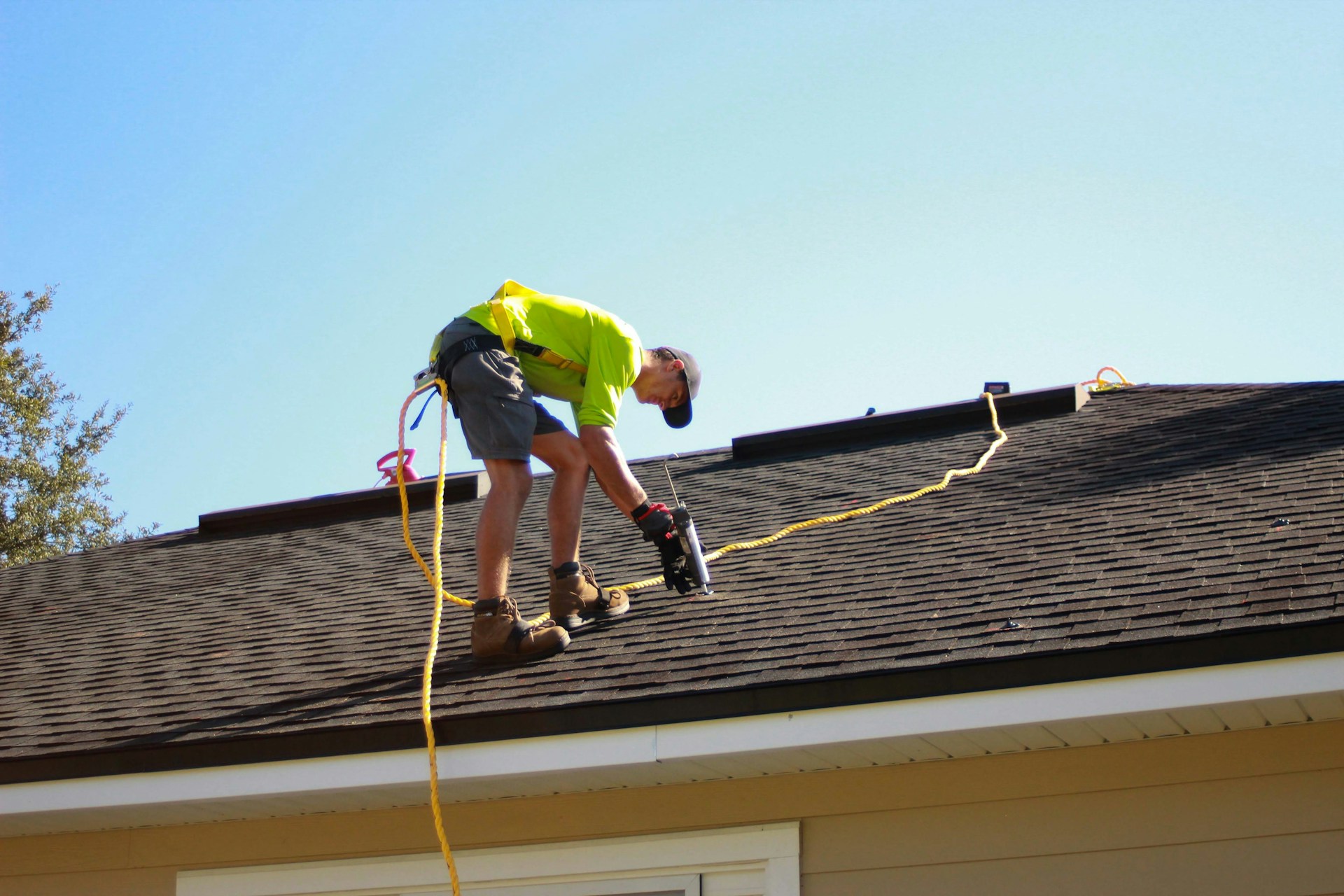PROPERTYSPARK ARTICLE
The Ultimate Guide to Roof Waterproofing Solutions for Homeowners
Imagine the soothing rhythm of rain hitting your roof, a comforting sound that signifies your home is a sanctuary against the elements. Yet, over time, this very sanctuary could be under threat as water seeps into the structure of your house, causing unseen damage.
As a homeowner, you don’t want to find out too late that your roof has succumbed to water damage. That’s where roof waterproofing comes into play. It’s an essential safeguard, but with a range of solutions on the market, how do you decide what’s best for your home?
Stick around and we’ll walk you through all you need to know about roof waterproofing solutions, ensuring your home remains your stronghold against the rain.

Understanding Roof Waterproofing
Diving right into the heart of the matter, you should know that roof waterproofing is a critical process that involves the application of a protective membrane to your roof to prevent water intrusion and damage. It’s crucial to grasp that this isn’t just a cosmetic update – it’s a necessary measure to extend the lifespan of your roof.
When you neglect waterproofing, you’re setting yourself up for costly repairs down the line. Water seepage doesn’t just lead to unsightly stains, it can also compromise the structural integrity of your roof. This is why professionals use waterproofing membranes – they’re specifically designed to lock out moisture, ensuring your roof stays dry and damage-free.
It’s important to note that not all waterproofing solutions are created equal. You’ve got options like liquid membranes, bituminous coatings, and PVC sheets. Each has its own set of pros and cons, but they all serve the same purpose – to shield your roof from water damage.
Signs of Roof Water Damage
Before you can address the issue of water damage, you need to know what signs to look out for on your roof. There’s no denying that water damage is a silent destroyer, gradually eroding the integrity of your home.
Look for damp spots on your ceiling; these are telltale signs that water is seeping through your roof. Sometimes, these damp spots might extend to your walls, indicating an even more serious issue. You might also notice a musty smell in certain rooms, which is a clear sign of moisture buildup.
Check your attic regularly, as it’s often the first place water damage shows up. If you find water stains or mold growth, it’s a sign that your roof isn’t effectively repelling water.
But water damage isn’t always inside your home. On your roof, look for missing, curled, or cracked shingles. These are vulnerable spots where water can penetrate. Also, if your gutters are constantly overflowing or filled with granules from your shingles, it’s likely that water isn’t properly draining from your roof.
Choosing the Right Waterproofing Solution
When it comes to choosing the right waterproofing solution for your roof, it’s important to consider the type of roof, the extent of the water damage, and the climate of your area. Not all solutions are created equal, and what works best for a flat roof mightn’t be ideal for a pitched one.
If your roof has sustained significant water damage, you’ll need a robust solution. A liquid rubber membrane, for example, forms a seamless barrier that can withstand heavy rainfall. However, if the damage is minimal, a simpler and more affordable option like a bituminous coating might suffice.
Climate also plays a crucial role. In colder regions, opt for a solution that can withstand freeze-thaw cycles, like a polyurethane liquid membrane. If you live in a hot, sunny area, choose a UV-resistant coating to prevent deterioration from the sun’s rays.
Step-by-Step Roof Waterproofing Process
To ensure your home stays dry and damage-free, let’s walk you through the step-by-step process of effectively waterproofing your roof.
First, you’ll need to thoroughly clean your roof. This involves removing any debris, dirt and loose particles. You should also patch up any noticeable cracks or holes.
Once that’s done, you’re ready for the priming stage. You’ll apply a primer to the roof’s surface. This helps the waterproofing material adhere more effectively. Make sure you’re using a primer that’s compatible with your chosen waterproofing solution.
Next up is the application of the waterproofing material. You’ll need to apply it evenly across the entire surface of your roof. Pay particular attention to areas that are prone to leaks, such as joints and edges.
After the waterproofing material has been applied, you’ll need to give it time to dry completely. This can take anywhere from a few hours to a couple of days, depending on the specific product you’re using.
Maintenance Tips for Waterproofed Roofs
Having successfully waterproofed your roof, it’s essential to now focus on regular maintenance to ensure its long-term effectiveness. Remember, your roof’s waterproofing isn’t a set-it-and-forget-it operation. Regular checks, at least twice a year, are crucial.
Inspect your roof for any visible signs of damage, like cracks or blisters. Small issues can quickly become big problems if they’re not addressed promptly. If you spot any damage, don’t delay repairs. Use a good quality sealant to fix minor issues, but for more significant problems, consider hiring a professional.
Don’t forget to clean your gutters and downspouts regularly. Blocked gutters can cause water to pool on your roof, damaging the waterproof layer. During cleaning, check for peeling paint or rust, which could indicate water leakage.
Also, check your attic for any moisture or water stains. This is often the first sign of a leak and can help you address the issue before it becomes more severe.
Lastly, remember that waterproofing doesn’t make your roof invincible. It’s still susceptible to damage from severe weather conditions, so after a heavy storm, it’s a good idea to inspect your roof for any potential damage.
Conclusion
Now you’re equipped with the knowledge to protect your home from roof water damage.
You’ve mastered the signs, the solutions, and the process of roof waterproofing.
Remember, maintaining your waterproofed roof is key to its longevity.
Don’t hesitate to get professional help if needed.
Your home is your haven, and it’s worth the investment to keep it safe and dry.
Now go forth, and waterproof with confidence.
Learn how to Become a Top Agent with the Guaranteed 5 Min/Week System
No social media experience needed
Free webinar seat (limited quantities)
Learn the guaranteed 5 min/week system
Become a social media superstar
Constantly get new leads
Beat the competition
Get a special webinar deal
This Agent Tripled His Commissions Just With Social Media
Learn how this real estate agent tripled his commissions just with social media and how you too can become a social media superstar.
Why You Can’t Just “Boost” Your Real Estate Listing
That big blue button has tempted you before right? You want to Facebook Boost your Real Estate listing. Find out why you shouldn’t!
How Much Should Realtors Spend On Social Media
A question we get often from Realtors is “how much should I spend on social media?” Find out exactly how much to spend and how to spend it without getting ripped off!


